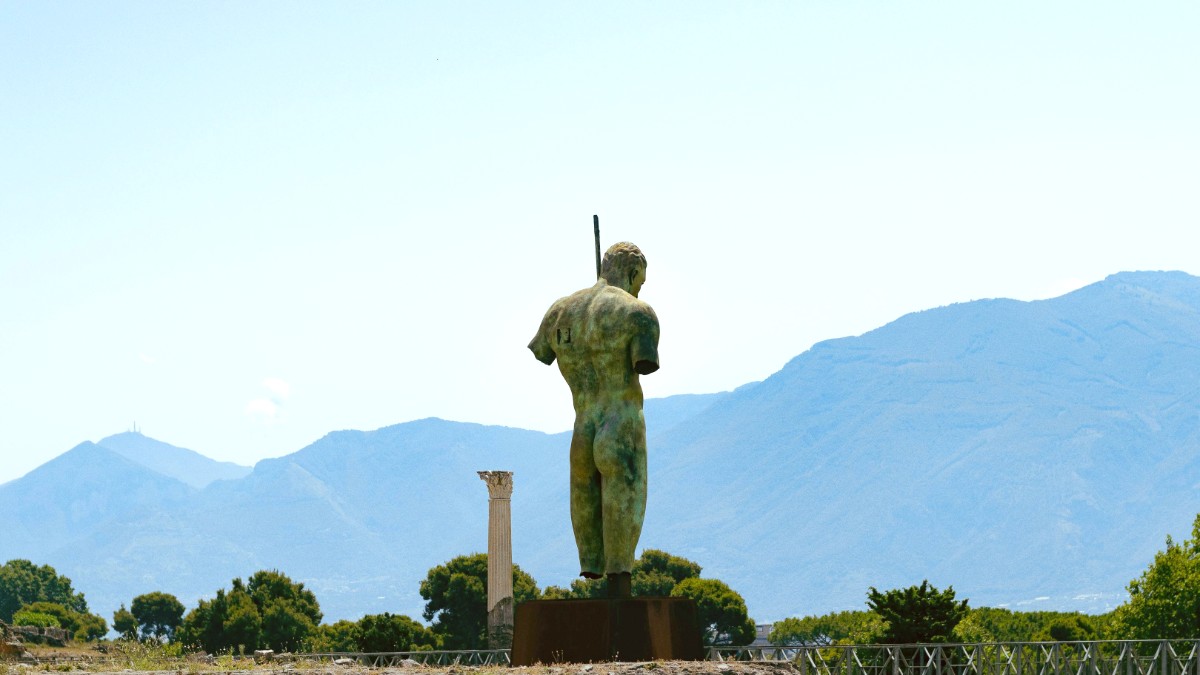
Campania, Italy
Its well-preserved streets, houses, and public buildings offer an unparalleled glimpse into daily Roman life, halted in 79 AD. Plan to spend 4-8 hours exploring.
Must-visit sites include the Forum, Basilica, Temple of Apollo, Amphitheatre, Stabian Baths, House of the Faun, Villa of the Mysteries, Lupanar, Garden of the Fugitives, Via dell'Abbondanza, House of the Vettii, and House of the Tragic Poet.
There are no publicly accessible "secret" viewpoints, but exploring off the main path can offer quiet moments.
Better preserved than Pompeii due to pyroclastic flows, offers an intimate look at Roman life. Accessible by Circumvesuviana.
Lavish Roman villa with beautiful frescoes, part of UNESCO site. Accessible via Circumvesuviana.
Hike to the crater for panoramic views of the Bay of Naples. Accessible by bus.
Large Roman Catholic cathedral in modern Pompei, a major pilgrimage site.
Medieval castle overlooking the Bay of Naples, offers stunning views and historical interest.
While Pompeii is mainly an archaeological site, its natural setting around Mount Vesuvius offers compelling experiences.
Hike to the iconic volcano's crater for an unique geological experience and dramatic views.
From Vesuvius, enjoy expansive views of the Bay of Naples, stretching from Sorrento to Naples, including Pompeii.
The entire Bay of Naples offers stunning coastal scenery, complementing your ancient explorations.
Visitors can hike to the crater from the bus drop-off point. The walk is moderate, approximately 20-30 minutes one way.
Book your Vesuvius tourExperience a dramatic perspective on the area's geological power by seeing the volcanic features.
Find volcano toursWear sturdy shoes with good grip. Bring water, a hat, and sunscreen, as the path is exposed.
Consider a light backpackThe views from Vesuvius or nearby coastal towns like Sorrento highlight the Bay's natural beauty.
Explore coastal excursionsThe elevated vantage point of Vesuvius offers excellent photographic opportunities of the surrounding landscape.
For those seeking to discover more or escape the main tourist paths, these smaller attractions offer valuable insights.
Explore how Romans lived outside the bustling city, in working farms and grand villas.
Combine visits to archaeological sites with museum trips and natural excursions for a comprehensive experience.
Allocate ample time for these main sites. Consider separate days for each to fully immerse.
Pair your archaeological visits with a Vesuvius hike and a trip to MANN in Naples.
For exploration, include Boscoreale, Villa Regina, or Stabiae in your itinerary.
Always check the official sites for up-to-date hours, fees, and rules.
Pompeii Official SiteFamiliarize yourself with Circumvesuviana train schedules.
Visit tourist offices for maps and local recommendations.
When visiting museums, adhere to standard etiquette to preserve artifacts and ensure a pleasant experience for all.
Respect the historical significance of the ruins and follow park rules for conservation.
Hiring an official licensed guide at the Pompeii entrance can greatly enhance your visit.
They bring the ruins to life with their knowledge of Roman history and daily life.
While Pompeii is a focal point, the Campania region offers a wealth of diverse attractions beyond its famous ruins.
Discover picturesque towns perched on cliffs, colorful houses, and stunning sea views.
Experience island escapes with crystal-clear waters, grottoes, and charming towns.
Home to some of the best-preserved ancient Greek temples outside of Greece.
This site offers a different historical perspective from the Roman ruins of Pompeii.
A magnificent Royal Palace, an UNESCO World Heritage site, often compared to Versailles.
A day trip to Caserta provides a glimpse into Bourbon royal history.
Explore the fascinating subterranean world beneath Naples, a network of tunnels and catacombs.
Several tour operators offer guided visits to different parts of the underground city.
Consider dedicating separate days for each major region or site to avoid rushing.
Research train, bus, and ferry routes for efficient regional travel.
A local guide can truly enhance visits to the more complex historical sites.